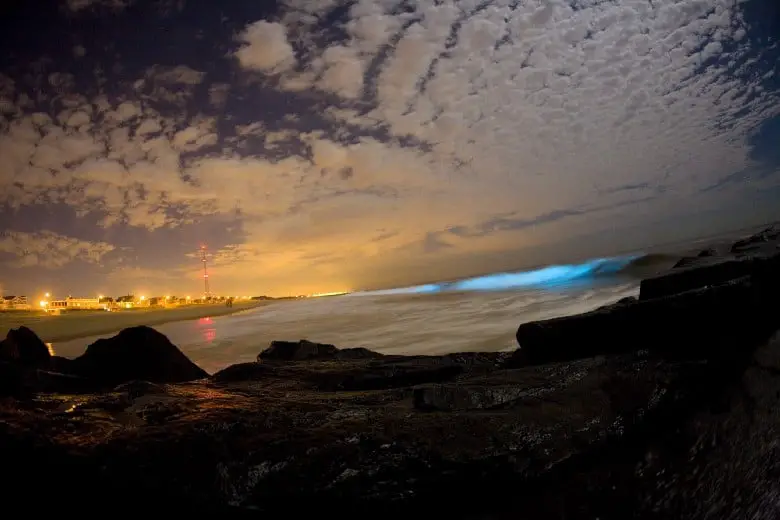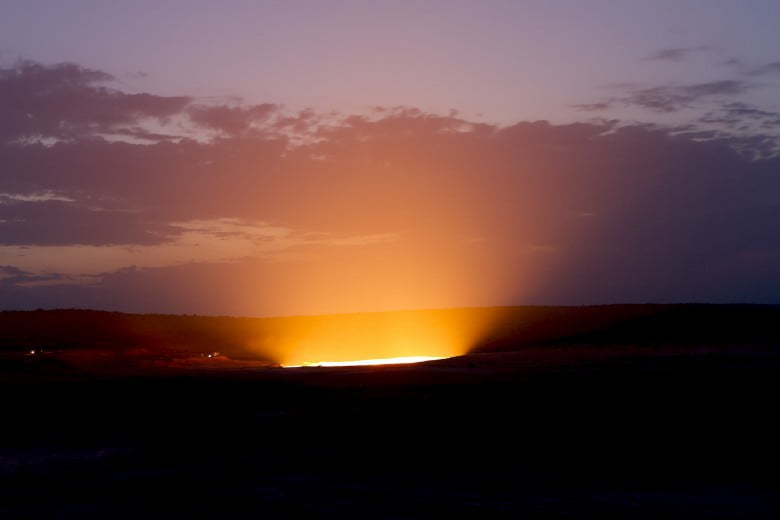
You’re in the tropics strolling down the beach at night when you suddenly spot something a bit…out of place. As the waves roll in front of you, an alienesque white glow emanates from the watery depths.
Do you run? Do you scream? Do you search for this article and find out what’s behind this uber-cool natural phenomenon?
I think we know the answer.
It’s the Sea of Stars in the Maldives!
What causes the Sea of Stars to glow?

But why does the water glow?
Surprisingly, it’s not due to radioactive underwater mutants making their slow march to invade the Above World. Rather, it’s a type of bioluminescent phytoplankton that goes by the name of dinoflagellates.
Now say that three times fast.
The water in these special areas is full of this breed of plankton during certain times of the year, and as they glow when rattled, the motion of the ocean causes them to glow in astounding beauty.
As you might’ve guessed, this shimmering natural glow makes the ocean here look like the sea is full of stars — thus the name.
Bioluminescence is thought to be a defense mechanism, only activating when these dinoflagellates experience stress or stimulation. In the case of the Sea of Stars, the rolling motion of the waves triggers this reaction, especially when approaching land.
As for the underlying mechanism, there are two components that trigger the glowing. The first is an enzyme called dinoflagellate luciferase, and the second part is a chlorophyll-derived substance named luciferin. I’m not exactly sure if it’s just a coincidence both materials have Lucifer in the name, but I’d be screaming at the devil too if I saw this stuff before science was a thing.
During the daytime, the microscopic creatures sometimes collectively appear brown or red, and when they amass in large quantities, people call the phenomenon a “red tide.” The color can be quite different, though.

Unfortunately, this algal bloom can be harmful to marine life and even cause shellfish poisoning when humans eat shellfish that have consumed the plankton.
Where is the sea of stars?

The bioluminescent plankton can usually be viewed on Vaadhoo Island in the Raa Atoll in the Maldives. The island is around 5 miles, or 8 kilometers, away from the Malé International Airport, where tourists can gain passage on a boat to reach the island.
Do other areas have bioluminescent plankton?
Yes! All over the world, in fact. This handy website lists 21 spots where you can go see them during certain times of the year.
You can see bioluminescent plankton in California and Puerto Rico, Mexico, Jamaica, Nicaragua, Panama, Thailand, Vietnam, Cambodia, Indonesia, Maldives, India, New Zealand, Ireland, Belgium, and Taiwan.
I’ve even been to a few of these places! But I never had the fortune of seeing this amazing experience — it is on my bucket list though.
Have you ever seen a Sea of Stars yourself? If so, I’d love to see a picture!
Head over here for more of my written shenanigans.





